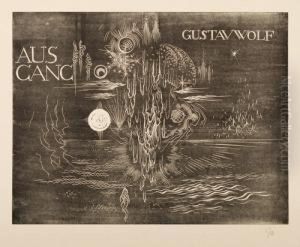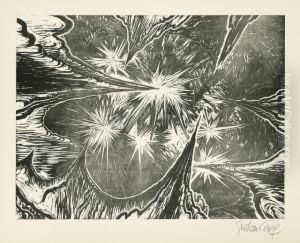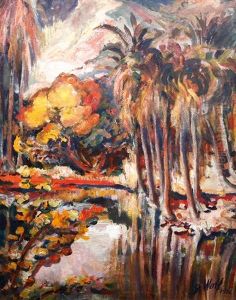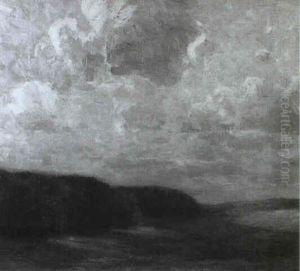Gustav Wolf Paintings
Gustav Wolf was a German painter and graphic artist, born on January 20, 1887, in Heidelberg, Germany. He is known for his contributions to German Expressionism, a movement that emerged in the early 20th century, emphasizing the expression of emotional experience rather than physical reality. Wolf's work often depicted urban life, landscapes, and scenes of labor, reflecting the social changes and challenges of his time.
Wolf's artistic journey began at the Karlsruhe Academy of Fine Arts, where he studied under notable figures such as Hans Thoma and Wilhelm Trübner. His early work was influenced by Impressionism, but he soon developed a more distinct style characterized by bold colors and dynamic compositions, indicative of the Expressionist movement. Wolf was deeply affected by the socio-political climate of Germany, particularly during and after World War I. This period saw a dramatic shift in his work, with a stronger focus on social critique and the human condition.
Throughout the 1920s and 1930s, Wolf gained recognition for his unique approach to capturing the essence of urban and industrial life. His paintings often featured the bustling streets of cities, the toil of workers, and the stark contrasts between the wealthy and the poor. Despite the rise of the Nazi regime and the ensuing challenges for many artists, Wolf continued to produce work that was both poignant and critically acclaimed.
Wolf's contributions to art were not limited to painting; he was also an accomplished graphic artist, creating a number of prints that depicted similar themes of social and political commentary. His ability to convey complex emotions and narratives through both color and line made him a significant figure in the German Expressionist movement.
Gustav Wolf's life and career were cut short by the turmoil of World War II. He passed away on September 23, 1947, in Karlsruhe, Germany. Despite the relatively brief span of his career, Wolf's work left a lasting impact on the world of art. His paintings and prints remain a powerful testament to the human spirit's resilience and the artist's role in society's critical observation. Wolf's exploration of social themes, combined with his expressive technique, continues to resonate with audiences and artists alike, securing his place in the annals of art history.



